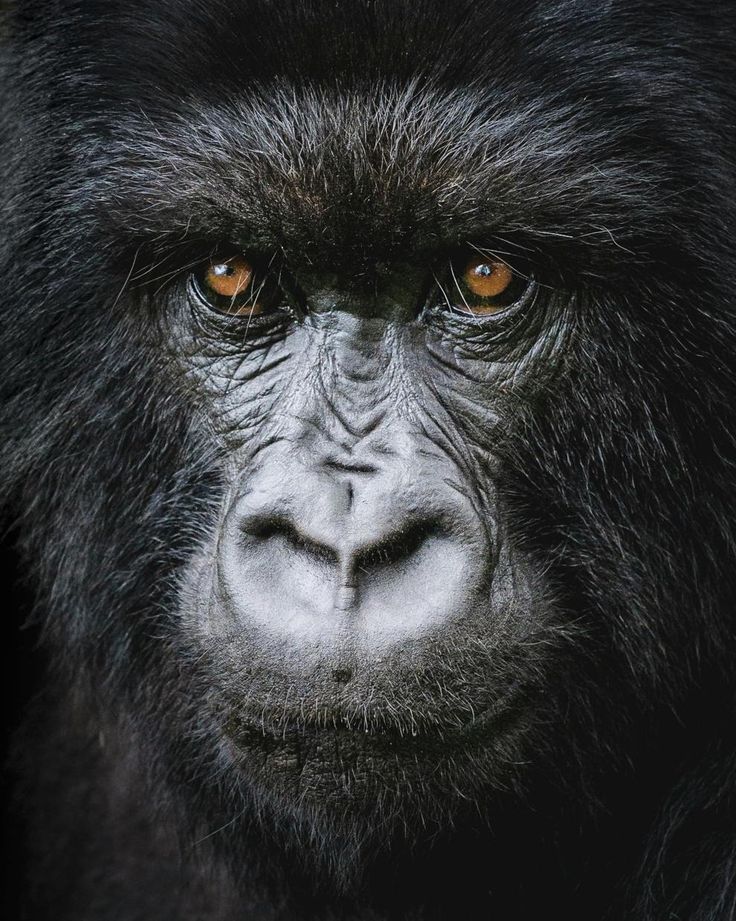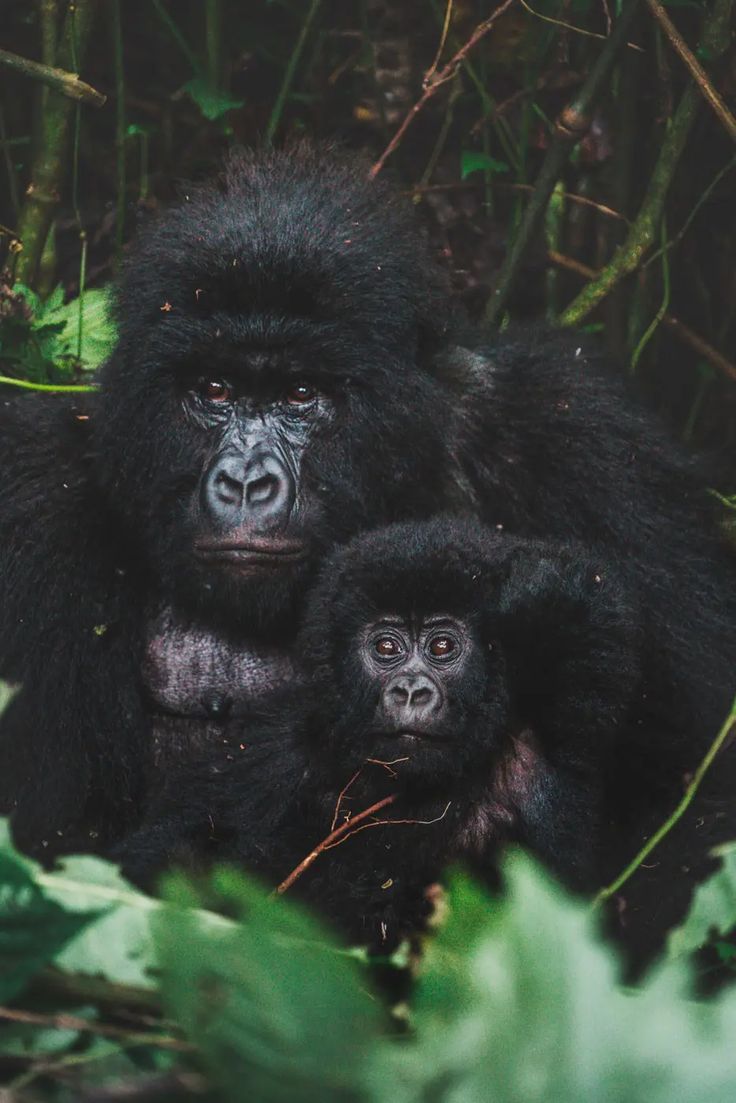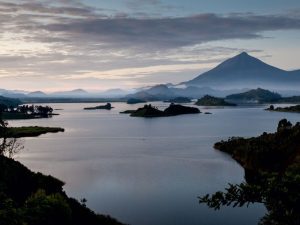Gorilla Trekking Safety
Gorilla Trekking Safety .Gorilla trekking is a thrilling, once-in-a-lifetime experience that allows you to observe endangered mountain gorillas in their natural habitat. However, it also requires careful attention to safety due to the gorillas’ size, strength, and the challenging trekking environment. With these safety tips and guidelines, you can ensure a secure and enjoyable experience.

Understanding Gorilla Trekking Regulations
The Uganda Wildlife Authority, Rwanda Development Board, and similar organizations in the Democratic Republic of Congo regulate gorilla trekking to prioritize both visitor safety and gorilla conservation. Following these rules is essential, as they’re designed to protect trekkers and minimize the impact on gorilla habitats.
Some of these regulations include:
- Age Restriction: Only visitors aged 15 and above are allowed to trek gorillas, as younger children may unintentionally break rules or spread illnesses.
- Group Size and Time Limit: Gorilla trekking groups are limited to 8 people per gorilla family, with a maximum of one hour allowed in the gorillas’ presence. This helps reduce stress for the gorillas and limits exposure to human diseases.
Physical Safety Tips for Trekking
- Prepare Physically: Gorilla trekking involves hiking through mountainous terrain with steep slopes and thick vegetation. Physical fitness is beneficial, especially for multi-hour hikes. Basic cardio, strength exercises, and hiking practice can make the experience more comfortable and enjoyable.
- Hire a Porter: Porters are available to assist trekkers with carrying backpacks and other belongings. Hiring a porter not only lightens your load but also supports the local economy.
- Wear the Right Gear:
- Footwear: Sturdy, waterproof hiking boots with good grip are essential for stability on muddy and slippery trails.
- Clothing: Wear long-sleeved shirts and trousers to protect against insects and thorny plants. Layers are also recommended to accommodate temperature changes.
- Rain Gear: Bwindi, Volcanoes, and Virunga national parks all experience frequent rain. A waterproof jacket and backpack cover are must-haves.
- Watch Your Step and Pace: Take careful, deliberate steps, especially on slippery paths. Follow your guide’s pace rather than rushing, as the terrain can be unpredictable and challenging.
Health and Hygiene Measures
- Practice Disease Prevention: Gorillas can contract diseases from humans, so it’s crucial to follow hygiene guidelines strictly.
- Stay Home If Unwell: If you’re feeling ill, inform park authorities immediately, as symptoms such as coughing or sneezing can put gorillas at serious risk.
- Maintain Distance: Always keep a minimum distance of 7 meters (about 23 feet) from the gorillas to reduce the risk of disease transmission.
- Avoid Touching Anything: Do not touch plants or other objects along the trail, as they may carry viruses or bacteria that could harm gorillas if contacted.
- Carry Essentials for Comfort:
- Water and Snacks: Staying hydrated is crucial, especially during a long hike. Bring enough water, energy snacks, and a light lunch.
- Sunscreen and Insect Repellent: Use biodegradable sunscreen and insect repellent to protect both your skin and the environment.
Behavioral Safety Around Gorillas
- Stay Calm and Composed: While encountering gorillas is exciting, sudden movements or loud noises can be stressful for them. Remain calm and avoid any sudden gestures to prevent frightening the animals.
- Follow Your Guide’s Instructions: Park rangers and guides are experienced with gorilla behavior. Listen to their guidance on positioning, movements, and behavior throughout the trek and while near the gorillas.
- Respect Gorilla Communication: Gorillas communicate through sounds and body language. If a gorilla beats its chest or makes a low rumbling sound, stay still and avoid direct eye contact, as these can be signs of assertiveness. Your guide will interpret these cues and advise you on the best response.
- Avoid Direct Eye Contact: While it’s tempting to look gorillas in the eyes, some may perceive direct eye contact as a challenge. Instead, observe them indirectly, focusing on the experience without provoking a reaction.
Environmental and Ethical Considerations
- Leave No Trace: Always adhere to “leave no trace” principles. Avoid leaving any litter, food wrappers, or belongings behind to preserve the natural environment.
- Limit Photography Disturbances: Photography is allowed, but turn off your flash, as the bright light can disturb and stress the gorillas. Be considerate of your positioning, and avoid moving too close for a better shot.
- Support Conservation Efforts: Gorilla trekking permits directly fund conservation and protection efforts, so purchasing a permit is a crucial part of responsible tourism. Consider donating or supporting additional initiatives to help gorilla conservation.
Additional Safety Tips for the Trek
- Carry a Basic First Aid Kit: Scrapes, blisters, or insect bites are common during treks. Having antiseptic, band-aids, and anti-inflammatory medication on hand can be helpful for minor issues.
- Understand Emergency Procedures: Park guides are trained for emergencies, but it’s useful to be aware of basic emergency procedures. Guides carry communication devices, and there are evacuation plans for extreme cases.
- Avoid Attracting Insects: Strong fragrances in perfumes or lotions can attract insects in the forest. Opt for fragrance-free or lightly scented products for comfort on the trail.
Choosing Safe Accommodations and Logistics
- Select Reputable Lodging: Staying in eco-friendly and reputable accommodations near the park can enhance safety and convenience. Options such as Buhoma Lodge in Uganda, Volcanoes Bwindi Lodge, and Virunga Lodge provide comfortable, safe stays close to trekking points.
- Use Local Guides and Services: Locally trained guides have in-depth knowledge of the terrain, weather, and wildlife. Their expertise is invaluable, especially if you’re trekking in challenging areas.
- Check Health Precautions: Bwindi, Volcanoes, and Virunga regions are malaria-prone, so take appropriate precautions. Consider taking anti-malarial medication and using mosquito nets or repellents as needed.
Conclusion
Gorilla trekking offers an extraordinary opportunity to witness these majestic creatures in the wild, but safety and conservation must come first. By following these safety guidelines, respecting the gorillas’ natural behavior, and understanding the trek’s physical and environmental demands, you’ll contribute to the conservation of these endangered animals while also ensuring a rewarding, safe experience. Through thoughtful preparation and responsible tourism, you help protect mountain gorillas for future generations, making your encounter with them all the more meaningful.




